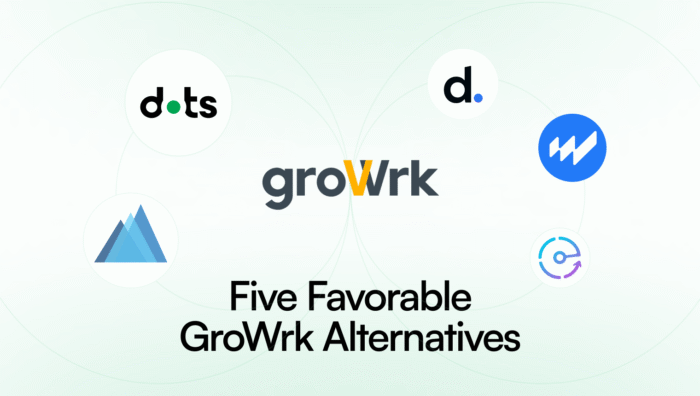Many of us already enjoy the perks of remote work, like flexible work hours and 30-second commutes, which is why it’s easy to believe that this setup is here to stay. But there’s always a “but,” right? Despite the benefits, remote work still has its fair share of challenges, such as work-from-anywhere employees working longer hours, according to recent reports.
These issues can lead to hidden costs that impact operations and, eventually, a business’s finances.
The good news is that software companies are stepping up to tackle these challenges head-on. Here, we’ll break down the hidden costs of remote work and discuss how innovative software solutions make remote work more sustainable.
1. Employee Burnout and Mental Health Struggles
Remote work often blurs the line between work and personal life. Employees might find themselves working longer hours, struggling to unplug, or feeling isolated without the social interactions of an office. Studies show that remote workers are more likely to experience burnout, with 69% reporting increased stress levels compared to in-office employees.
The Cost
Burnout isn’t just bad for employees—it’s expensive for businesses. Burned-out employees are 63% more likely to take sick days and 2.6 times more likely to leave their jobs. Replacing an employee can cost anywhere from 50% to 200% of their annual salary.
How Companies Are Addressing It
- Calm for business: An app that features guided meditation videos and mental health resources.
- Headspace for work: Similar to Calm, featuring mindfulness and stress management tools.
- Slack’s Do Not Disturb mode: An ideal mode for employees and employers who want to foster healthy boundaries after hours.
- Microsoft Viva Insights: Apps like Viva Insights track work/productivity trends and patterns, which they use when suggesting break times to prevent burnout.
- Remote team building: Activities like online escape rooms and virtual coffee breaks can help strengthen camaraderie among employees.
2. Productivity Pitfalls & Over-Reliance on Meetings
Virtual meetings can be exhausting. Back-to-back Zoom calls require employees to be “always on” and leave little time for actual work. Plus, tracking productivity in a remote setting can be tricky. Without the right tools, managers might default to micromanagement, which only makes things worse.
The Cost
A Forbes survey found that having too many meetings ranked as the top cause of fatigue at work. It’s no surprise that the term “meeting fatigue” was coined, a phenomenon recognized even by experts.
Inefficient workflows and fatigue can lead to an estimated $136.4 billion annually in lost productive time for employers.
How Companies Are Addressing It
- Loom: Enables async video updates to replace unnecessary meetings.
- Notion: Centralizes project management and documentation for better workflow efficiency.
- Clockwise (AI Scheduling): A calendar optimizer that can minimize meeting overload.
3. Security Risks and Compliance Challenges
Remote work allows employees to work in a much more relaxed environment, whether at the beach, a coffee shop, or practically anywhere with a Wi-Fi connection. The only problem is that public networks are prone to cyber threats, anything from a simple phishing attack to a total data breach.
The Real Cost:
IBM’s 2024 report on data breaches revealed that the average data breach costs a company $4.88 million. The risk increases for remote employees’ devices, where breaches may take longer to be detected and resolved. And the consequences get even worse for small businesses that don’t usually have the funds or resources to resolve them quickly.
How Companies Are Addressing It
- Apps that use zero-trust security systems, which means it’ll always ask for verification for every request to access.
- Business-grade virtual private networks (VPNs) and encrypted messaging apps.
- AI-assisted compliance tracking software that keeps track of the latest data protection laws around the world.
- Authenticator apps, such as Google Authenticator, that generate and refresh one-time passwords every 30 seconds.
4. Collaboration and Company Culture Gaps
Interpersonal connections may suffer due to the fewer everyday in-office interactions, especially for new hires who may struggle to fit in. Another thing that takes a hit is company culture, as remote employees may not feel as connected to it.
The Real Cost
If a team is disconnected, the company misses out on the 21% increase in profitability and 17% boost in productivity that comes with strong engagement. Low engagement also increases turnover risk, adding costly rehiring and training expenses.
How Companies Are Addressing It
- Gather and Teamflow create virtual office environments where employees can interact naturally.
- Donut for Slack pairs employees for casual chats to foster team bonding.
- WorkPatterns structures manager-employee check-ins to improve engagement and feedback loops.
5. Problems with IT Asset Management and Logistics
Equipping remote employees with the right IT hardware is no small feat. From shipping delays to lost devices, managing IT assets remotely can be a logistical nightmare. Retrieving hardware from offboarded employees adds another layer of complexity.
The Cost
The average cost of equipping a remote employee with IT hardware is $1,500 to $2,000. Lost or unreturned devices can add thousands more to the bill.
How We Address ITAM and Logistics at Dots
We may not (yet) be as big as Google, Slack, and Microsoft, but we share their goal for companies with remote employees: to make remote work easier! With our services at Dots, companies can hit more than one target at a time.
Dots automates IT logistics, ITAM, and asset lifecycle management. Remote onboarding and offboarding, IT hardware procurement, warehousing, and delivery can be handled behind the scenes, freeing up IT, HR, and operations teams to focus on more important tasks, particularly driving more profit.
We’re proud of our numbers: IT teams can save 9 hours every week, and companies see up to $500K in annual savings.
Making Remote Work Sustainable
The hidden costs of remote work aren’t going away, but they can be managed. Companies that invest in smarter solutions—whether through better security measures, async communication tools, or IT asset management—can reduce financial strain while keeping employees productive and engaged.
The key? Recognizing that remote work isn’t just about flexibility. It’s about building a system that works for both employees and the bottom line.
Dots supports remote and hybrid companies worldwide with IT asset management and IT procurement on their free-forever tier. Book a demo and let one of our experts lead the way.





